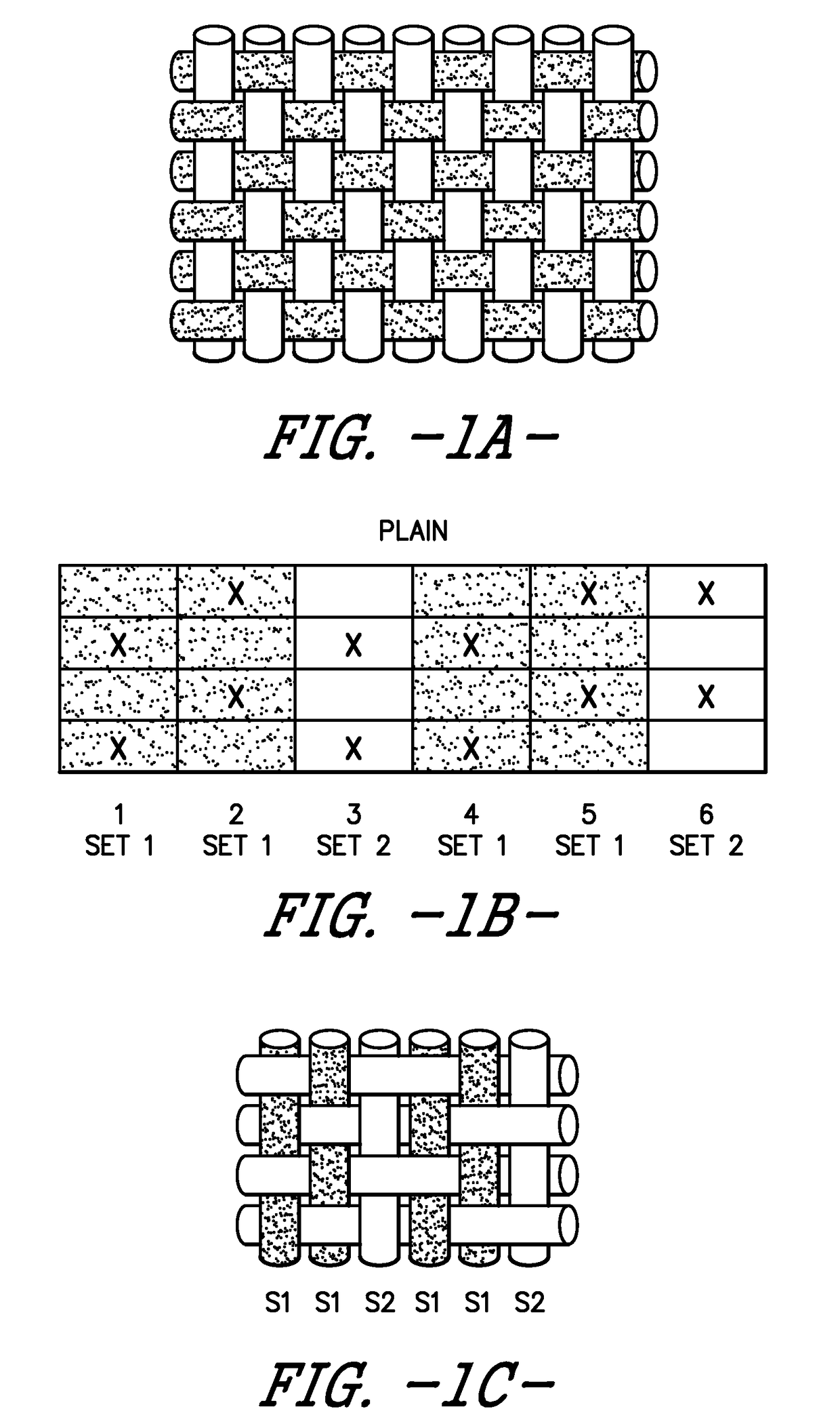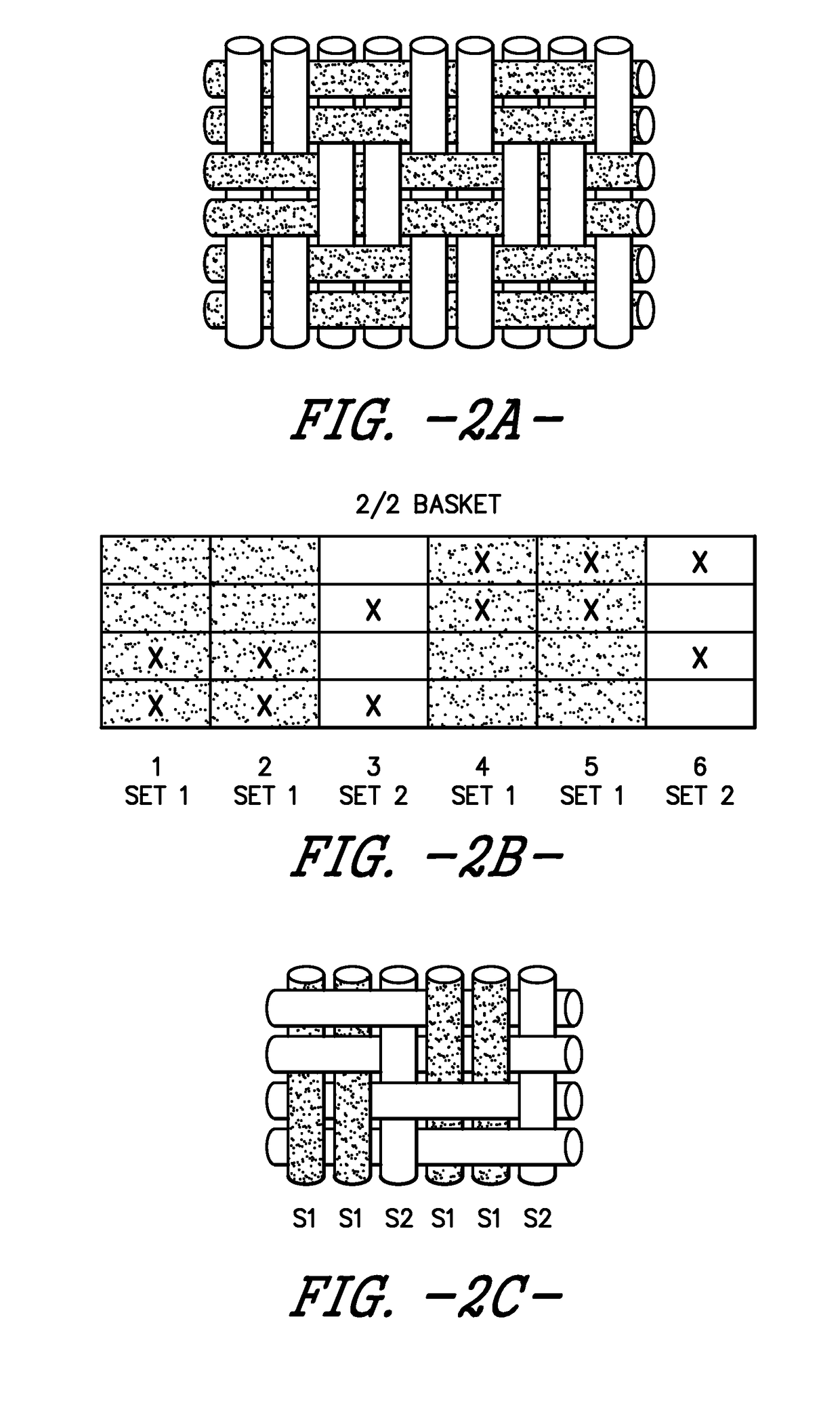Interlocking weave for high performance fabrics
a weave and high-performance fabric technology, applied in the field of interlocking weave for high-performance fabrics, can solve the problems of large difficulty in handling, prone to fraying and falling apart along the cut edges more easily, and the weaving pattern is not widely used in the high-performance fabric industry. achieve the effect of improving handleability
- Summary
- Abstract
- Description
- Claims
- Application Information
AI Technical Summary
Benefits of technology
Problems solved by technology
Method used
Image
Examples
Embodiment Construction
[0023]FIGS. 1A, 2A, 3A, and 4A represent traditional weave patterns with a single set of warp yarn. FIGS. 1B, 2B, 3B, and 4B are weave charts representing these same weave patterns interrupted and interlocked with a second set of warp yarn in a plain weave pattern. Columns 1-6 of these “B” group figures represent a warp yarn, while each row represents a fill yarn. The “X” denotes where the warp yarn is passing over the fill yarn. FIGS. 1C, 2C, 3C, and 4C represent weave patterns of the present invention derived from the weave charts of FIGS. 1B, 2B, 3B, and 4B.
[0024]The ratio range of warp set one to warp set two is preferably 2:1 to 5:1, more preferably 2:1 to 3:1, most preferably 2:1. For example: in a 2:1 ratio, there would be two yarns of warp set one, followed by one yarn of warp set two, followed by two yarns of warp set one, followed by one yarn of warp set two, and so on. In a 3:1 ratio, there would be three yarns of warp set one, followed by one yarn of warp set two, follow...
PUM
 Login to View More
Login to View More Abstract
Description
Claims
Application Information
 Login to View More
Login to View More - R&D
- Intellectual Property
- Life Sciences
- Materials
- Tech Scout
- Unparalleled Data Quality
- Higher Quality Content
- 60% Fewer Hallucinations
Browse by: Latest US Patents, China's latest patents, Technical Efficacy Thesaurus, Application Domain, Technology Topic, Popular Technical Reports.
© 2025 PatSnap. All rights reserved.Legal|Privacy policy|Modern Slavery Act Transparency Statement|Sitemap|About US| Contact US: help@patsnap.com



